 May 14, 2020 John E. Ross, KD8IDJ, Editor
| ||||||
COVID-19 Impact & News Find the latest news and information on the impact of the coronavirus pandemic to ARRL members and our global amateur radio community. ARRL Announces New Life 70+ Membership The ARRL Board of Directors recently voted to create a special Life Membership opportunity for individuals who are at least 70 years old. Starting on June 1, the Life 70+ Membership will be available to individuals who have turned 70 and have a combined 25 years of paid annual ARRL membership. Life 70+ Members receive all benefits of an annual membership, including their choice of print magazine delivery (QST or On the Air), and digital access to these publications, plus the digital versions of Qualifying members selecting this level of membership will enjoy the convenience of having to make a single payment for their entire tenure as an ARRL Member and not be subject to any future ARRL dues increase. To apply for Life 70+ membership, individuals must complete the special Life 70+ Member application -- available on June 1 -- and submit proof of date of birth, if this information is not already on file with ARRL. The Life 70+ membership fee must be made in a single payment. Past membership dues payments will not apply toward Life 70+ Membership, but a credit will be applied for applicants who paid their dues in full between April 1 and May 31, 2020. Life 70+ Membership Dues Rates
ARRL reserves the right to change or substitute the benefits, products, or services associated with a member's original Life 70+ Member package at any time during the membership. Dues are non-refundable. Life 70+ membership applications will be available for download beginning on June 1. ARRL Seeks Clarification of Amended Amateur Service RF Safety Rules ARRL has filed a Petition for Clarification addressing two issues arising from amended FCC RF safety rules that go into effect on June 1 for the Amateur Service and other FCC-regulated services. Licensees will have 2 years to determine if an RF safety evaluation is now required under the new rules and to perform an evaluation and implement any needed mitigation measures. Current rules already require amateur stations to meet RF exposure limits, but more radio amateurs will have "For applicants and licensees in the Amateur Radio Service, we substitute our general exemption criteria for the specific exemption from routine evaluation based on power alone in §97.13(c)(1) and specify the use of occupational/controlled limits for amateurs where appropriate," the FCC said. While radio amateurs have always had to comply with RF exposure limits, certain stations have been exempted from having to conduct evaluations based upon power and frequency. On May 8, ARRL asked the FCC to clarify that using maximum permissible exposure (MPE) limits be permitted in the Amateur Service for required RF safety evaluations of 2200-meter operations, just as they are elsewhere in the amateur spectrum. Removal of the exemption for amateurs resulted in a requirement to use specific absorption rate (SAR) limits for amateur frequencies between 100 and 300 kHz. "Near-field calculation of a uniform field applied to a transmitter and antenna operating at 1 W EIRP on 2200 meters would result in a very conservative estimate of specific absorption rate (SAR) and is a valid measurement for determining safety of operation," ARRL told the FCC. "We request clarification that the rules do not intend to preclude the use of MPE as a surrogate for SAR to evaluate amateur operations in ARRL also wants the FCC to clarify that its amended rules permit the use of near-field regression rates, using the MPE table to compare against the maximum field strength that may occur from a handheld portable device, instead of using the SAR. In its filing, ARRL maintained that SAR data is not available for amateur equipment, as it is for equipment used in other services. Before the rules were amended, mobile and portable transmitters generally were exempt from the requirement to perform routine environmental evaluations. Under §97.13(c)(1) as amended, effective on June 1, amateur licensees must ensure compliance with FCC RF exposure requirements spelled out in sections 1.1307(b), 2.1091, and 2.1093 of the FCC rules, where applicable. The rule directs radio amateurs to OET Bulletin 65, Supplement B for methodologies and guidance to evaluate amateur radio operation. The FCC has provided 2 years -- until May 31, 2022 -- for licensees to determine if evaluations are now required, to perform such evaluations where necessary, and to implement any needed mitigation measures. The FCC did not amend the actual RF exposure limits that were adopted in 1996. Read more. Choosing FTx Transmit and Receive Frequencies in Crowded Contest Bands Here's how to pick FT-mode transmit and receive frequencies in crowded contest bands. First, pick an audio offset frequency greater than 500 Hz, but less than the suggested frequency intervals (e.g., 2 kHz). In crowded band conditions, the "base" transmit frequencies for FT4 or FT8 are suggested to be at 2 kHz intervals. For example, some stations may set their radio's frequency to 14.130 MHz, while others Here's the reasoning: If the CQing station chooses 14.130.0 with an offset of 2.4 kHz, then a listening station's radio tuned to 14.132.0 will "see" that station at 400 Hz. Many radios have audio passbands of between 500 Hz and 3,000 Hz. Frequencies outside that range are not received as well. A reduced sensitivity at 400 Hz can make the difference in decoding successfully. The station answering the CQ (radio at 14.132.0 MHz) should likely pick a frequency at or near the CQ frequency, since the operator doesn't know whether the CQing station's frequency is at 14.130 or 14.132. If the receiving station chooses, say, 1.5 kHz, this would be at 14.133.5. A CQing station set to 14.130 may not be decoding all the way to 3.5 kHz from the radio's offset frequency. -- Thanks to The ARRL Contest Update ARRL Podcasts Schedule
The On the Air and Eclectic Tech podcasts are sponsored by Icom. Both podcasts are available on iTunes (iOS) and Stitcher (Android), as well as on Blubrry -- On the Air | Eclectic Tech. "ARRL at Home Hamvention" Weekend of Specials Set For the first time in its 68-year history, Dayton Hamvention® will not take place, due to concerns about the coronavirus outbreak. ARRL understands that many members will miss going to Hamvention, which While we can't be together in Dayton in 2020, ARRL has put together a weekend of specials to bring a bit of the Hamvention spirit and excitement to members during what would have been Dayton Hamvention weekend, May 14 - 17. On the ARRL at Home Hamvention page, members will find a special message from ARRL President Rick Roderick, K5UR; new membership premiums; the latest products; clearance merchandise, and our "ARRL at Hamvention" button. All who make weekend purchases will receive a free ARRL button with their order, while supplies last. Visit the ARRL at Home Hamvention page to check out all the offerings. The K7RA Solar Update Tad Cook, K7RA, Seattle, reports: No sunspots appeared last week. The previous 7 days had only one big sunspot group on one day, and the sunspot number was 35. Over the 7-day period, this averaged out to a sunspot number of 5, so average daily sunspot numbers declined from 5 to 0 this week. The average daily solar flux also declined, from 69.5 to 68.5.
Predicted solar flux is 70 on May 14 - 31; 68 on June 1 - 13, and 70 on June 14 - 27. Predicted planetary A index is 5 on May 14 - June 8; 8 on June 9 - 10; 5 on June 11 - 13; 10 and 8 on June 14 - 15, and 5 on June 16 - 27. Sunspot numbers for May 7 - 13 were 0, 0, 0, 0, 0, 0, and 0, with a mean of 0. The 10.7-centimeter flux was 68.7, 67.9, 71, 67.9, 66.2, 68.9, and 68.8, with a mean of 69.5. Estimated planetary A indices were 4, 4, 3, 5, 5, 4, and 4, with a mean of 5.1. Middle latitude A index was 5, 4, 3, 5, 7, 5, and 4, with a mean of 5. A comprehensive K7RA Solar Update is posted Fridays on the ARRL website. For more information concerning radio propagation, visit the ARRL Technical Information Service, read "What the Numbers Mean...," and check out K9LA's Propagation Page. A propagation bulletin archive is available. Monthly charts offer propagation projections between the US and a dozen DX locations. Share your reports and observations. Just Ahead in Radiosport
See the ARRL Contest Calendar for more information. For in-depth reporting on amateur radio contesting, subscribe to The ARRL Contest Update via your ARRL member profile email preferences. New WSJT-X Beta Version Offers Significant FT4 and FT8 Upgrades A new beta version of the WSJT-X software suite has been released, which includes the first updates to the popular FT8 and FT4 protocols since last fall. Co-Developer Joe Taylor, K1JT, said the "candidate release" WSJT-X version 2.2.0-rcl incorporates significant program upgrades to FT8, FT4, and other protocols. The beta version will be valid for a month. "This candidate release is your first chance to test the new features and provide feedback to the WSJT Development Group," Taylor The latest beta version corrects bugs that prevented AP decoding and/or multi-pass decoding in some circumstances. The algorithm for AP decoding has been improved and extended. FT8 decoding is now spread over three intervals -- starting at 11.8 seconds into a receive sequence -- typically yielding around 85% of the possible decodes for the sequence. "You, therefore, see most decodes much earlier than before," the Release Notes explain. A second processing step starts at 13.5 seconds, and a final step at 14.7 seconds. "Overall decoding yield on crowded bands is improved by 10% or more," the Release Notes say, although systems with receive latency greater than 0.2 seconds will experience smaller improvements, even while seeing many decodes sooner. Other changes:
Release candidate WSJT-X 2.2.0-rcl will be available for 1 month (starting on May 10). A general availability release of WSJT-X 2.2.0 is anticipated for June 1. Installation packages for Windows, Linux, and Macintosh are available on the WSJT-X Development Group page. Scroll down to "Candidate release: WSJT-X 2.2.0-rc1." The packages are also available from SourceForge. The WSJT-X Development Group request those using the new beta version of WSJT-X to alert the developers and to report any bugs or improvements they have implemented, using instructions included in the User Guide. Read more. ARISS Sets Second Test of New Multipoint Telebridge Contact System Amateur Radio on the International Space Station (ARISS) is hoping to refine its new Multipoint Telebridge Contact via Amateur Radio system for handling scheduled ham radio contacts between International Space Station crew members and schools or organizations on Earth. On May 15 at 1510 UTC, it will conduct a second test of the new protocol by connecting students in Alberta, Canada, with an astronaut on the ISS. The COVID-19 pandemic eliminated conventional opportunities for ARISS contacts that typically involved large numbers of students and faculty gathering at a school or educational institution for the event. Under the multipoint telebridge concept, an amateur station in the footprint of a space station pass at the time a contact has been scheduled serves as an Earth station, making direct contact with NA1SS onboard the ISS. A telebridge network then delivers two-way audio from the Earth station to each student taking part in the contact. For the May 15 contact, John Sygo, ZS6JON, near Johannesburg, South Africa, will operate the Earth station. The students' families, faculty members, and even members of the public will be able to listen in as each student at Airdrie Space Science Club in Alberta -- a youth model rocket building and astronomy club -- takes a turn asking a question of astronaut Chris Cassidy, KF5KDR. One question on the list: "How has the COVID-19 pandemic affected you while you are in space?" Brian Jackson, VE6JBJ, is a club leader. "During this pandemic, our opportunities to develop kids' interest in space have been interrupted," Jackson said. "This ARISS contact gets them looking back up, towards the sky, and imagining themselves as an astronaut one day." Members of the public may view a livestream of the contact via YouTube. ARISS is a cooperative venture of international amateur radio societies, including ARRL and AMSAT in the US, and space agencies around the world that support the International Space Station. Two New Chinese Ham Satellites Expected to Launch in September Two new Chinese amateur radio satellites are expected to launch on September 15. CAS-7A and CAS-7C follow in the wake of numerous amateur radio satellites put into space by CAMSAT. CAS-7A, a 27-kilogram microsat, will carry several transponders, including a 15-meter-to-10-meter (H/t) linear transponder, and a 2-meter-to-70-centimeter (H/u) linear transponder. CAS-7A also will include a V/u (2 CAS-7C is a 2U CubeSat carrying a V/u linear transponder and a CW beacon. IARU has not yet coordinated frequencies for CAS-7C, which is to deploy a 1,080-meter (3,543 feet) long, 1-millimeter carbon fiber rope. The two satellites will launch from Jiuquan Satellite Launch Center into a 500-kilometer sun-synchronous orbit with an inclination of 98°. Some specifics, according to coordination information:
Announcements
Amateur Radio Gains Significant Boost in UK by Connecting People During Lockdown A recent BBC news feature has outlined how ham radio has gotten a significant boost by connecting people during the COVID-19 lockdown in the UK. The article, by Vanessa Pearce, quotes the Radio Society of Great Britain (RSGB) -- the UK's IARU member-society -- as saying that many former hams are now returning to the hobby. Mark Rider, G3VHJ -- a retired engineer who lives alone in North Warwickshire -- said that after the lockdown restricted his occasional trips to the pub, rehearsing with musician friends, and visiting his wife in a nursing home, he decided to dust off his ham radio equipment "to seek out
some other social interaction." Rider said that ragchewing has become one of the highlights of his day. "Just speaking to somebody else in the same situation is very rewarding," he said. The 67-year-old told BBC News that keeping in touch with others has been more important since his wife suffered a stroke. RSGB General Manager Steve Thomas, M1ACB, said the society has experienced a three-fold increase in license examination applications since social distancing rules were put into place. The UK has about 75,000 amateur licensees. Eleven-year-old Anne-Marie Rowland, 2E0RUX, of Cornwall, worked with the Cornish Amateur Radio Club to conduct informal twice-weekly nets to help keep people in touch. "We have some regulars, but also
some new people join in," she told the BBC. Her father, Bill, M0NXF, runs a net that has attracted older radio amateurs who are self-isolating, to help them feel connected. The RSGB recently instituted its "Get on the Air to Care" (#GOTA2C) campaign in conjunction with the National Health Service and its GB1NHS amateur station to promote amateur radio use during the pandemic lockdown. Some stations have been adding /NHS to their call signs to support the effort, which aim to support the emotional health and wellbeing of the amateur radio community. The RSGB introduced remote administration of entry-level Foundation-class amateur radio exams in mid-April. Pete Sipple, M0PSX, told BBC News that he's seen a "massive" surge in demand for training courses and exam session and has had to up the number of course offerings. In Brief...
Upcoming ARRL Section, State, and Division Conventions Note: Many conventions and hamfests have been canceled or postponed due to the coronavirus pandemic. Check the calendar of canceled events on the ARRL website.
Find conventions and hamfests in your area.
. .
Subscribe to...
Free of charge to ARRL members...
| ||||||
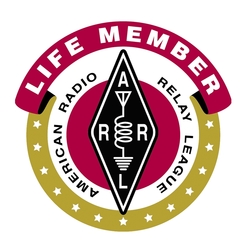 QEX and National Contest Journal (NCJ). In addition, each Life 70+ Member will receive a Life Member pin and a window decal and may purchase an exclusive Life Member plaque.
QEX and National Contest Journal (NCJ). In addition, each Life 70+ Member will receive a Life Member pin and a window decal and may purchase an exclusive Life Member plaque. to evaluate their stations under the new rules. The revised
to evaluate their stations under the new rules. The revised 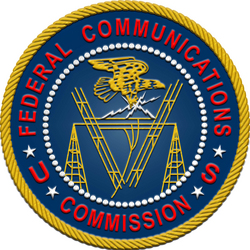 the 2200-meter band."
the 2200-meter band."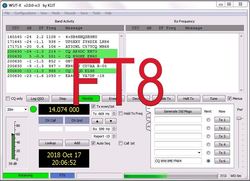 are at 14.132 or 14.134 MHz. Under these conditions, it makes sense to choose a transmit frequency offset greater than 500 Hz, but less than 2 kHz.
are at 14.132 or 14.134 MHz. Under these conditions, it makes sense to choose a transmit frequency offset greater than 500 Hz, but less than 2 kHz.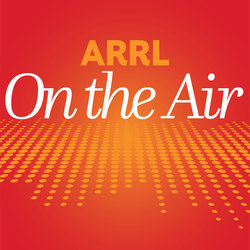 The latest episode of the On the Air podcast (Episode 5) focuses on the various types of modulation and tips on go kits. The On the Air podcast is a monthly companion to On the Air magazine, ARRL's magazine for beginner-to-intermediate ham radio operators.
The latest episode of the On the Air podcast (Episode 5) focuses on the various types of modulation and tips on go kits. The On the Air podcast is a monthly companion to On the Air magazine, ARRL's magazine for beginner-to-intermediate ham radio operators. The latest episode of the Eclectic Tech podcast (Episode 7) includes a discussion of HF aeronautical radio, the NCDXF beacon system, SpaceX's new Starlink satellites, and "Folding@Home," a system that uses distributed computing to search for a COVID-19 cure (among other things).
The latest episode of the Eclectic Tech podcast (Episode 7) includes a discussion of HF aeronautical radio, the NCDXF beacon system, SpaceX's new Starlink satellites, and "Folding@Home," a system that uses distributed computing to search for a COVID-19 cure (among other things).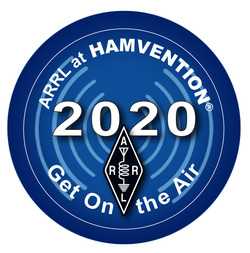 is always an occasion to catch up with friends, explore new products, and connect with ARRL via our Expo in the exhibit area.
is always an occasion to catch up with friends, explore new products, and connect with ARRL via our Expo in the exhibit area.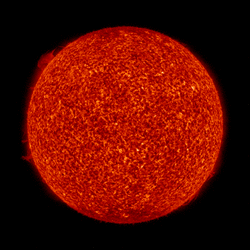 Geomagnetic indicators were quiet, with average daily planetary A index declining from 5.1 to 4.1, and mid-latitude A index from 5 to 4.7.
Geomagnetic indicators were quiet, with average daily planetary A index declining from 5.1 to 4.1, and mid-latitude A index from 5 to 4.7..JPG) advised. A list of program changes since WSJT-X 2.1.2 is available in the cumulative
advised. A list of program changes since WSJT-X 2.1.2 is available in the cumulative 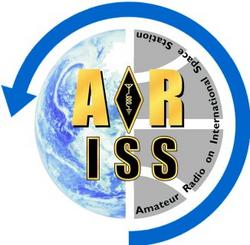 The ARISS multipoint telebridge system works around the issue by employing distance learning within distance learning, as many schools around the world have gone over to conducting classes remotely via teleconferencing, and students are physically separated.
The ARISS multipoint telebridge system works around the issue by employing distance learning within distance learning, as many schools around the world have gone over to conducting classes remotely via teleconferencing, and students are physically separated.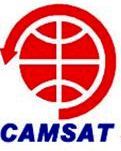 meters to 70 centimeters) FM voice transponder. According to the International Amateur Radio Union (IARU) satellite coordination site, CAS-7A is planned to have CW beacons on both 10 meters and 70 centimeters, 4.8k or 9.6k GMSK telemetry on 70 centimeters, and a 1 Mbps GMSK image data downlink on 3 centimeters for an onboard camera.
meters to 70 centimeters) FM voice transponder. According to the International Amateur Radio Union (IARU) satellite coordination site, CAS-7A is planned to have CW beacons on both 10 meters and 70 centimeters, 4.8k or 9.6k GMSK telemetry on 70 centimeters, and a 1 Mbps GMSK image data downlink on 3 centimeters for an onboard camera.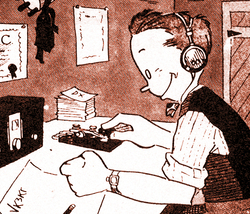 hour-long event every Wednesday at 1300 and 1900 UTC, and Thursdays at 0300 UTC. -- Thanks to The ARRL Contest Update
hour-long event every Wednesday at 1300 and 1900 UTC, and Thursdays at 0300 UTC. -- Thanks to The ARRL Contest Update
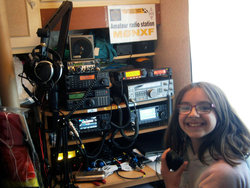
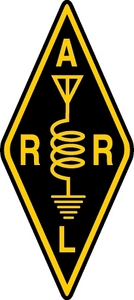 Due to the COVID-19 pandemic and a record number of recent orders, ARRL is currently experiencing delays in the fulfillment of orders. Combined with excessive demands on many shipping carriers, our members and customers should expect a 1 - 3 week delay in the delivery of their orders over the next few weeks. State of Connecticut safety requirements limit the number of employees allowed within the warehouse at one time to ensure their health and safety, further contributing to the fulfillment slowdown. Warehouse personnel are utilizing all available resources to get customers their products as quickly as possible and anticipate that the standard 3 - 7 day US delivery time will be restored sometime in June, once the state mandate has relaxed. ARRL remains committed to making sure that all customers get their orders as quickly as possible. We greatly appreciate everyone's patience and understanding during this time and thank you for your continued support of amateur radio and ARRL.
Due to the COVID-19 pandemic and a record number of recent orders, ARRL is currently experiencing delays in the fulfillment of orders. Combined with excessive demands on many shipping carriers, our members and customers should expect a 1 - 3 week delay in the delivery of their orders over the next few weeks. State of Connecticut safety requirements limit the number of employees allowed within the warehouse at one time to ensure their health and safety, further contributing to the fulfillment slowdown. Warehouse personnel are utilizing all available resources to get customers their products as quickly as possible and anticipate that the standard 3 - 7 day US delivery time will be restored sometime in June, once the state mandate has relaxed. ARRL remains committed to making sure that all customers get their orders as quickly as possible. We greatly appreciate everyone's patience and understanding during this time and thank you for your continued support of amateur radio and ARRL.(1).jpg) The transponder on
The transponder on 







